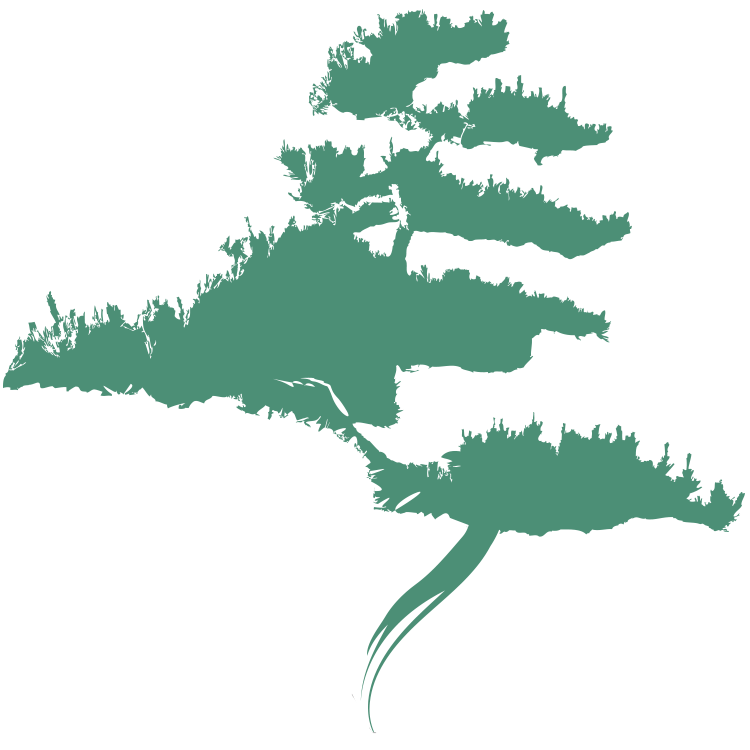JAPANESE WOODBLOCK PRINT
Japanese Friendship Garden woodblock prints illustrate a wide variety of Japanese lifestyle related topics. The prints show the beauty of ordinary life in Japan during the late Edo and Meiji period(late 18 century to early 19 century).
Kunisada / Toyokuni III (1786-1864)
Ladies with umbrella
Mizuki Toshikata (1866-1908)
Selection of Thirty -six of Beauties / Puppets under the Cherry Tree
Utagawa Toyokuni II (1777-1835)
Wood Block print
MIZUYA TANSU
2017.04.01
Mizuya means a place handled with water, but later a chest to store dishes and food in, was placed in the kitchen and came to be called a Mizuya or Mizuya Tansu. The shape is a combination of drawers and sliding doors, with the top and bottom overlapped. Because it was also used to store food, a wire mesh was placed on the top row of the door to allow ventilation and to keep flies from entering.
DOLL HOUSE
Japan, 1934
Artist: Unknown
2004.19.01
The dollhouse is an example of an urban townhouse in the Meiji period (1880-1890) which parallels the Victorian Age in western culture. The large lanterns are hung outdoors for the holidays and the arrangement of shochikubai signifies that the house is preparing for New Year’s. Shochikubai is a combination of freshly cut pine, bamboo, and plum branch meaning “The Three Friends of the New Year.”
There are no doors, windows, sofas, chairs, or beds familiar to western culture. In their place, the house has shoji (screens) serving as entryways. The occupants sit on tatami floors (straw mats) at the chabudai (low table). Rooms are divided by folding screens, byobu, which are decorated with cranes, a symbol of honor and loyalty. Futon (sleeping mats) are put away into oshiire (closets) during the day and pulled out at night. On the left is the daidokoro (kitchen) and the otearai (bathroom), located at the opposite end of the home. The geta by the otearai signals that the room is in use.
KITAMAE BUNE/NORTHERN-BOUND CARGO SHIP
1/40 Scale Ship Models
Japan
Artist: Kunitaro Matsumoto
2007.11.01
The Kitamae bune is a Japanese style of cargo ship, which made the rounds from Osaka- Kyoto and the coastal area of the Inland sea, the northern district and Hokkaido during the late Edo period to the mid Meiji era.
Kunitaro Matsumoto reproduced the ship model which is one- fortieth scale model of the actual size and reconstructed accurately.
KIMONO & UCHIKAKE
The kimono is the culmination of Japan’s textile artistry. Kimono, which literally means ‘’a thing to wear`` (ki ‘’wear`` and mono ‘’thing``) is influenced by the traditional Han Chinese clothing. They can use up an entire bolt of fabric and are often hand-sewn, owing to its delicate and ornate design.
Uchikake are used primarily for weddings as coats that go over the actual kimono and sash (obi). Uchikakes are heavily brocaded and are either white, or very colourful. Padded on the bottom, they are meant to trail along the floor.
Most uchikake kimonos are embroidered with auspicious designs such as cranes and flowers, in particular the peony (botan) and chrysanthemum (kiku) – the imperial flower of Japan. The phoenix and chrysanthemum represent yin and yang respectively, as often yin is the male, the gold phoenix and yang is the female, the silver chrysanthemum. The phoenix is symbolic of fidelity and happy marriage. The undergarment’s color is customarily red as it symbolizes ‘’blood`` and “life,” thus this color needs to be closest to the body to bestow a ‘’good life.”







